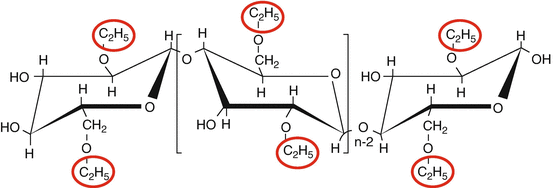Description
Ethyl cellulose is valuable in coatings, Hot-melt adhesives, hot-melt transfer inks, and plastic peel because of its low softening point and its broad compatibility with oils and resins. It can also be used in extrusion wire insulation, protective coatings, pigment-grinding bases, food additives, tablet binder in pharmaceuticals. Aqualon Ethylcellulose in soluble in esters, aromatic hydrocarbons, alcohols, ketones, chlorinated solvents, and inexpensive solvent combinations. The most useful solvent combinations contain 70-90% aromatic hydrocarbon with 10-30% alcohol. It is compatible with nitrocellulose and a broad range of oils, plasticizers, and resins. Also used as modifiers to improve hardness, gloss, adhesion and water resistance, coatings, etc.

